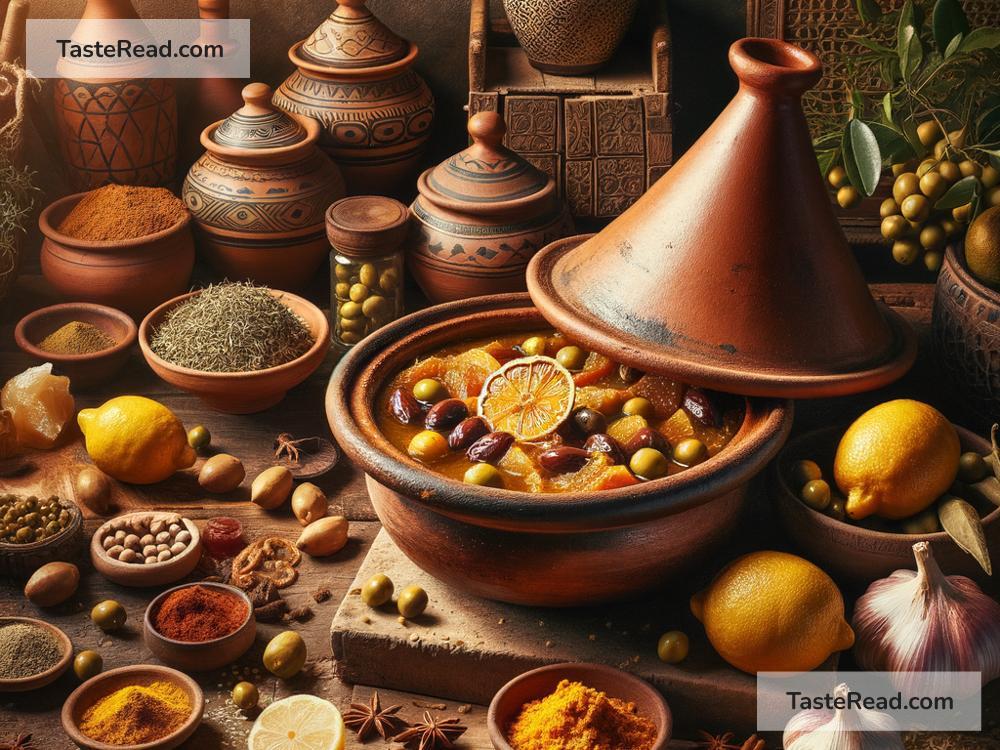Traditional Moroccan Tagine Cooking: A Unique and Delicious Experience
Cooking is an essential part of Moroccan culture, and one dish stands out as a beloved national treasure: the tagine. This slow-cooked meal is named after the clay pot in which it is prepared. Traditional Moroccan tagine cooking methods are not only about making delicious food but also reflect a way of life—connecting families, preserving heritage, and celebrating local flavors. In this article, we’ll explore the basics of tagine cooking, its unique methods, and why it continues to be popular in modern kitchens.
What is a Tagine?
A tagine is both a dish and a kitchen tool. The word refers to a distinctive cone-shaped clay pot used for cooking, as well as the meal prepared in it. The pot has two parts: the base, which is flat and round, and the lid, which is tall and shaped like a cone. This unique design helps to trap steam during cooking, keeping all the moisture and flavors inside.
Tagine meals are equally special. They usually consist of a mix of meat (like chicken, lamb, or beef), vegetables, spices, and sometimes dried fruits or nuts. The result is tender, flavorful food that combines sweet and savory tastes—a hallmark of Moroccan cuisine.
How Does Traditional Tagine Cooking Work?
Moroccan tagine cooking revolves around using the pot to slowly cook ingredients over low heat. This method is simple yet effective, allowing the flavors to blend and intensify over time. Unlike modern cooking techniques that rely on high heat or quick preparation, tagine cooking encourages patience and attention to detail.
Here’s how traditional tagine cooking works step by step:
-
Preparing the Pot: Before using a tagine, it is essential to season it properly to prevent cracking. Seasoning involves soaking the pot in water for several hours, rubbing it with olive oil, and heating it gently. Once seasoned, the tagine is ready for cooking.
-
Layering Ingredients: Moroccan tagine recipes call for layering ingredients to ensure even cooking. First, a base layer is added, usually containing onions or olive oil to prevent sticking. Next, chunks of meat are placed in the center, surrounded by fresh vegetables. Additional ingredients like spices, herbs, dried fruits, or nuts are sprinkled on top.
-
Adding Moroccan Spices: Moroccan cuisine is famous for its fragrant spices, and tagine dishes are no exception. Common spices include cinnamon, turmeric, ginger, cumin, paprika, and saffron. Fresh herbs, like parsley and cilantro, are also added to enhance the flavor.
-
Using Low Heat: Traditionally, tagines were cooked over a charcoal brazier called a “kanoun,” which maintains a slow and steady heat. Today, many people use stovetops or ovens for convenience, but the key is to use low heat. The shape of the lid helps circulate steam and keep the ingredients tender.
-
Slow Cooking: Tagine cooking is not about speed; it’s about allowing time for the meat to become tender, the vegetables to soften, and the spices to infuse the dish. Cooking can take anywhere from two to four hours, depending on the recipe.
What Makes Tagine Cooking Special?
Cooking with a tagine is more than just preparing a meal. It’s a tradition that brings people together and reflects the Moroccan way of life. Here are a few things that make tagine cooking so unique:
-
The Flavors: Moroccan tagine dishes balance sweet and savory flavors in a way that is truly distinctive. For example, chicken tagine might include preserved lemons and green olives, while lamb tagine often has prunes and almonds. The combination of spices creates a warm, aromatic experience.
-
Healthy Cooking: Tagine pots allow food to cook in their own juices, reducing the need for excess oil or water. This means dishes are flavorful and healthy at the same time.
-
Connection to Tradition: Every family in Morocco seems to have its own version of a tagine recipe, passed down through generations. Cooking with a tagine is a way to honor the past and continue cultural traditions.
-
A Social Experience: Tagines aren’t just about food; they’re about sharing. In Morocco, it’s common for families to eat directly from the tagine pot, scooping up bites with pieces of bread. The communal nature of this meal fosters connection and togetherness.
Why Tagine Cooking Is Still Popular Today
Despite modern cooking gadgets, tagine cooking remains beloved both in Morocco and around the world. The pot’s simple yet effective design has stood the test of time, making it a go-to tool for creating rich and flavorful meals. Additionally, the slow cooking process aligns with the growing appreciation for “slow food,” where people savor the art of cooking rather than rushing through meals.
For those new to Moroccan cuisine, cooking with a tagine is a great way to explore bold flavors and experience a different approach to food. Since tagine pots are widely available online and in stores, it’s easy for anyone to try this timeless tradition at home.
Final Thoughts
Traditional Moroccan tagine cooking is more than just a method of preparing food—it’s a celebration of culture, family, and flavor. From the iconic clay pot to the fragrant spices, every step of the process reminds us of Morocco’s rich culinary heritage. Whether you’re enjoying a lamb tagine with prunes or a chicken tagine with preserved lemons, you’re experiencing a dish steeped in history and love.
So, why not bring a taste of Morocco into your kitchen? Grab a tagine pot, choose a recipe, and take your time to create something delicious. With each slow-cooked bite, you’ll understand why this cooking tradition has lasted for centuries!


